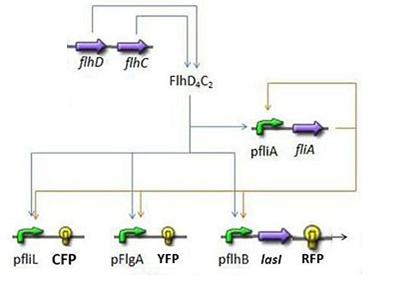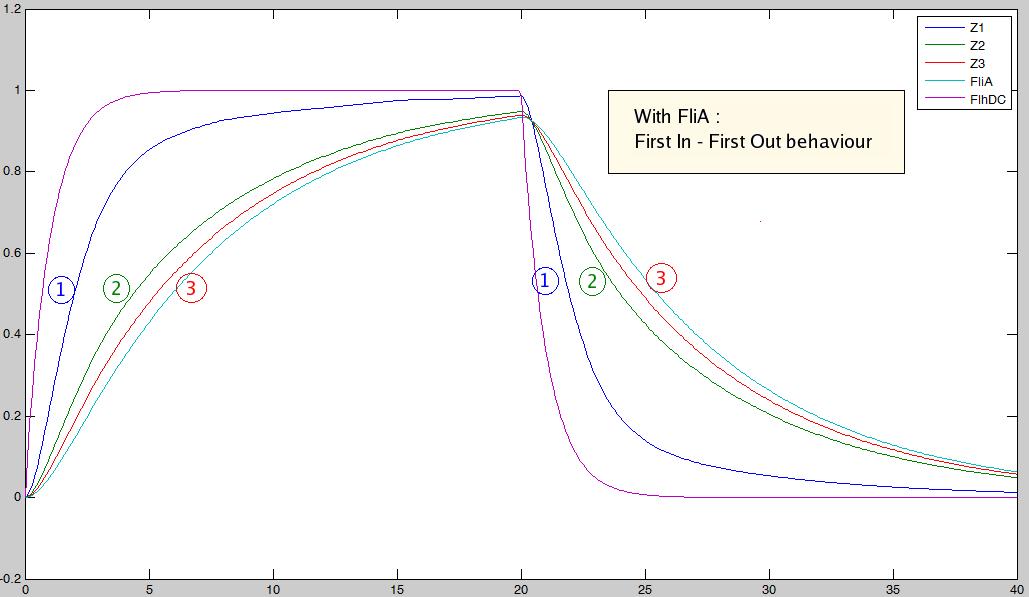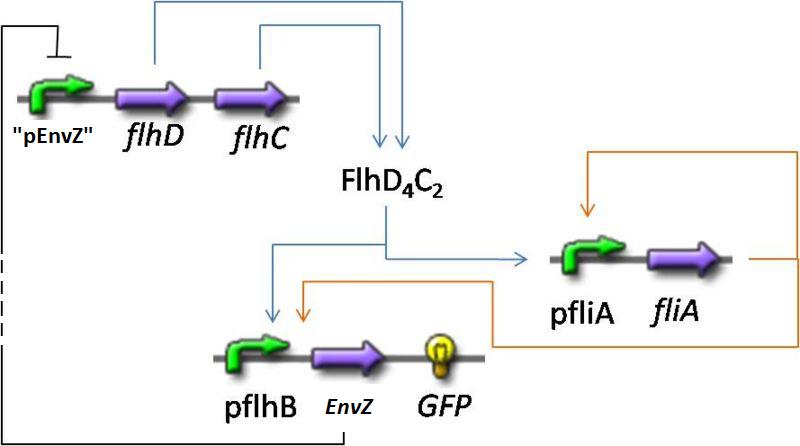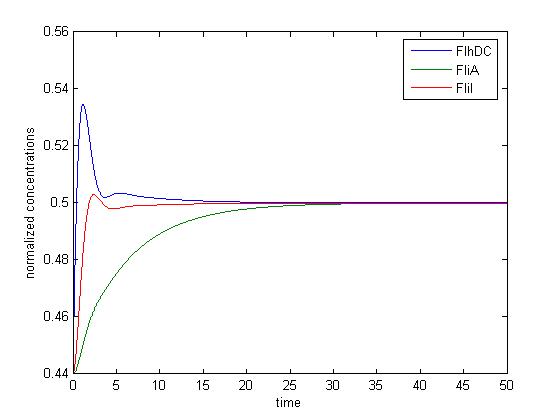Team:Paris/Analysis
From 2008.igem.org
(→Oscillations) |
(→Oscillations) |
||
| Line 18: | Line 18: | ||
Then, we have simulated the FIFO with a negative feedback, in order to observe oscillations. We have obtained the following results : | Then, we have simulated the FIFO with a negative feedback, in order to observe oscillations. We have obtained the following results : | ||
<br> | <br> | ||
| - | [[Image:Core_system.jpg|520px|left]][[Image:steady_state.jpg| | + | [[Image:Core_system.jpg|520px|left]][[Image:steady_state.jpg|390px|right]] |
<br> | <br> | ||
<br> | <br> | ||
Revision as of 08:53, 28 October 2008
|
Core system
Purpose of this SectionNow that we have obtained a genetic network corresponding to our project, we will analyse it through modeling. Therefore, you will find in this page the principal results coming from the models, as well as some resulting simulations. FIFO behaviourWe have designed a model corresponding to the genetic network and we have obtained the following results :
OscillationsThen, we have simulated the FIFO with a negative feedback, in order to observe oscillations. We have obtained the following results :
System ImprovementsBasically, we had to explore other possibilities to obtain oscillations. |
 "
"




